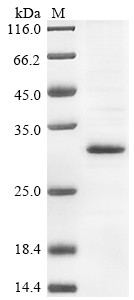Cookie preferences
This website uses cookies, which are necessary for the technical operation of the website and are always set. Other cookies, which increase the comfort when using this website, are used for direct advertising or to facilitate interaction with other websites and social networks, are only set with your consent.
Configuration
Technically required
These cookies are necessary for the basic functions of the shop.
"Allow all cookies" cookie
"Decline all cookies" cookie
CSRF token
Cookie preferences
Currency change
Customer-specific caching
FACT-Finder tracking
Individual prices
Selected shop
Session
Comfort functions
These cookies are used to make the shopping experience even more appealing, for example for the recognition of the visitor.
Note
Show the facebook fanpage in the right blod sidebar
Statistics & Tracking
Affiliate program
Conversion and usertracking via Google Tag Manager
Track device being used

If you have any questions, please use our Contact Form.
You can also order by e-mail: info@biomol.com
Larger quantity required? Request bulk
You can also order by e-mail: info@biomol.com
Larger quantity required? Request bulk
Organism: Rattus norvegicus (Rat). Source: Baculovirus. Expression Region: 30-278aa. Protein... more
Product information "Transforming growth factor beta-1 proprotein (Tgfb1), partial, rat, recombinant"
Organism: Rattus norvegicus (Rat). Source: Baculovirus. Expression Region: 30-278aa. Protein Length: Partial. Tag Info: N-terminal 6xHis-tagged. Target Protein Sequence: LSTCKTIDME LVKRKRIEAI RGQILSKLRL ASPPSQGEVP PGPLPEAVLA LYNSTRDRVA GESADPEPEP EADYYAKEVT RVLMVDRNNA IYDKTKDITH SIYMFFNTSD IREAVPEPPL LSRAELRLQR FKSTVEQHVE LYQKYSNNSW RYLGNRLLTP TDTPEWLSFD VTGVVRQWLN QGDGIQGFRF SAHCSCDSKD NVLHVEINGI SPKRRGDLGT IHDMNRPFLL LMATPLERAQ HLHSSRHRR. Purity: Greater than 85% as determined by SDS-PAGE. Endotoxin: Not test. Biological Activity: n/a. Form: Liquid or Lyophilized powder. Buffer: If the delivery form is liquid, the default storage buffer is Tris/PBS-based buffer, 5%-50% glycerol. If the delivery form is lyophilized powder, the buffer before lyophilization is Tris/PBS-based buffer, 6% Trehalose, pH 8.0. Reconstitution: We recommend that this vial be briefly centrifuged prior to opening to bring the contents to the bottom. Please reconstitute protein in deionized sterile water to a concentration of 0.1-1.0 mg/mL.We recommend to add 5-50% of glycerol (final concentration) and aliquot for long-term storage at -20 °C/-80 °C. Our default final concentration of glycerol is 50%. Customers could use it as reference. Storage: The shelf life is related to many factors, storage state, buffer ingredients, storage temperature and the stability of the protein itself. Generally, the shelf life of liquid form is 6 months at -20 °C/-80 °C. The shelf life of lyophilized form is 12 months at -20 °C/-80 °C. Notes: Repeated freezing and thawing is not recommended. Store working aliquots at 4 °C for up to one week. Relevance: Transforming growth factor beta-1: Multifunctional protein that regulates the growth and differentiation of various cell types and is involved in various processes, such as normal development, immune function, microglia function and responses to neurodegeneration . Activation into mature form follows different steps: following cleavage of the proprotein in the Golgi apparatus, Latency-associated peptide and Transforming growth factor beta-1 chains remain non-covalently linked rendering TGF-beta-1 inactive during storage in extracellular matrix . At the same time, LAP chain interacts with 'milieu molecules', such as LTBP1, LRRC32/GARP and LRRC33/NRROS that control activation of TGF-beta-1 and maintain it in a latent state during storage in extracellular milieus. TGF-beta-1 is released from LAP by integrins : integrin-binding to LAP stabilizes an alternative conformation of the LAP bowtie tail and results in distortion of the LAP chain and subsequent release of the active TGF-beta-1 . Once activated following release of LAP, TGF-beta-1 acts by binding to TGF-beta receptors , which transduce signal . While expressed by many cells types, TGF-beta-1 only has a very localized range of action within cell environment thanks to fine regulation of its activation by Latency-associated peptide chain and 'milieu molecules' . Plays an important role in bone remodeling: acts as a potent stimulator of osteoblastic bone formation, causing chemotaxis, proliferation and differentiation in committed osteoblasts . Can promote either T-helper 17 cells or regulatory T-cells lineage differentiation in a concentration-dependent manner . At high concentrations, leads to FOXP3-mediated suppression of RORC and down-regulation of IL-17 expression, favoring Treg cell development . At low concentrations in concert with IL-6 and IL-21, leads to expression of the IL-17 and IL-23 receptors, favoring differentiation to Th17 cells . Stimulates sustained production of collagen through the activation of CREB3L1 by regulated intramembrane proteolysis . Mediates SMAD2/3 activation by inducing its phosphorylation and subsequent translocation to the nucleus. Can induce epithelial-to-mesenchymal transition and cell migration in various cell types . Reference: "Activation of rat alveolar macrophage-derived latent transforming growth factor beta-1 by plasmin requires interaction with thrombospondin-1 and its cell surface receptor, CD36." Yehualaeshet T., O'Connor R., Green-Johnson J., Mai S., Silverstein R., Murphy-Ullrich J.E., Khalil N. Am. J. Pathol. 155:841-851(1999). Function: nan
| Keywords: | Tgfb1, Recombinant Rat Transforming growth factor beta-1 proprotein (Tgfb1), partial |
| Supplier: | Cusabio |
| Supplier-Nr: | BP023446RA |
Properties
| Application: | Activity not tested |
| Conjugate: | No |
| Host: | Insect cells |
| Species reactivity: | rat |
| MW: | 29.6 kD |
| Purity: | >85% (SDS-PAGE) |
Database Information
| KEGG ID : | K13375 | Matching products |
| UniProt ID : | P17246 | Matching products |
| Gene ID : | GeneID 59086 | Matching products |
Handling & Safety
| Storage: | -20°C |
| Shipping: | +4°C (International: +4°C) |
Caution
Our products are for laboratory research use only: Not for administration to humans!
Our products are for laboratory research use only: Not for administration to humans!
You will get a certificate here
Viewed

